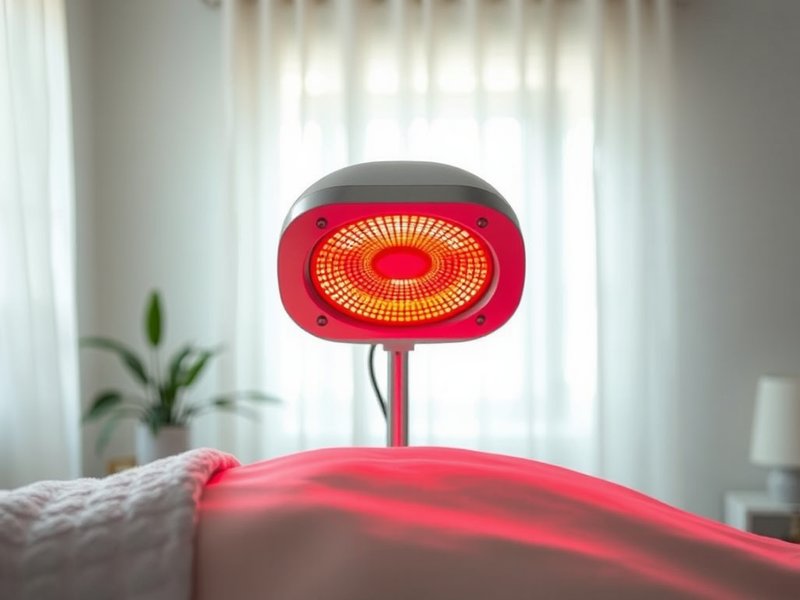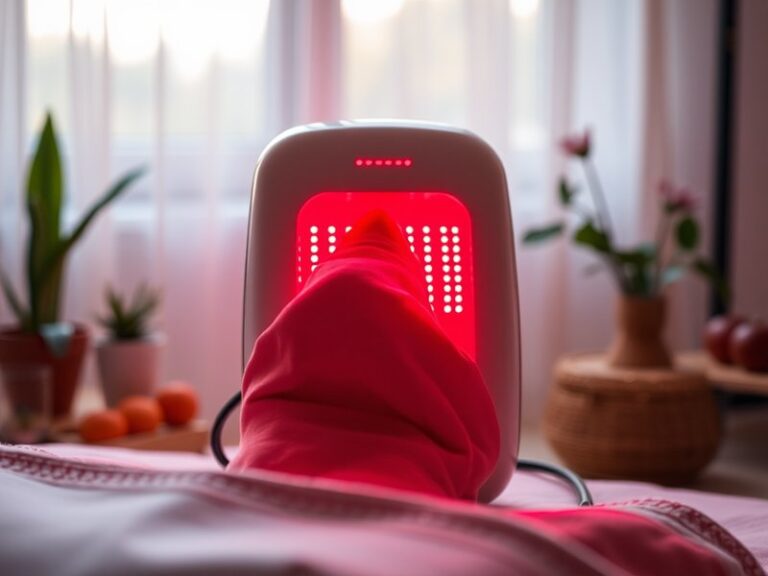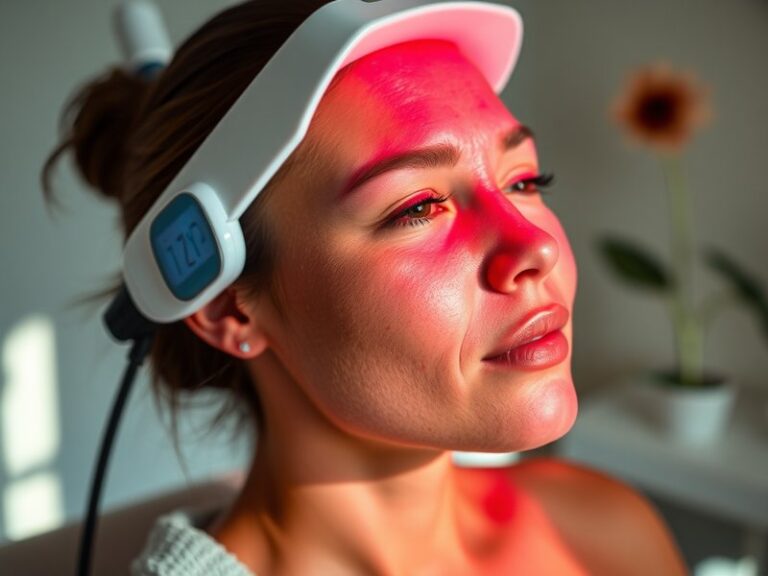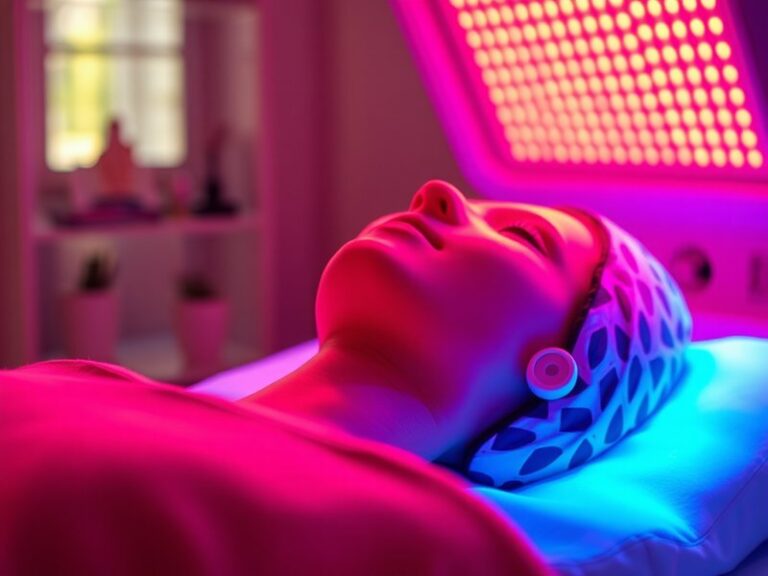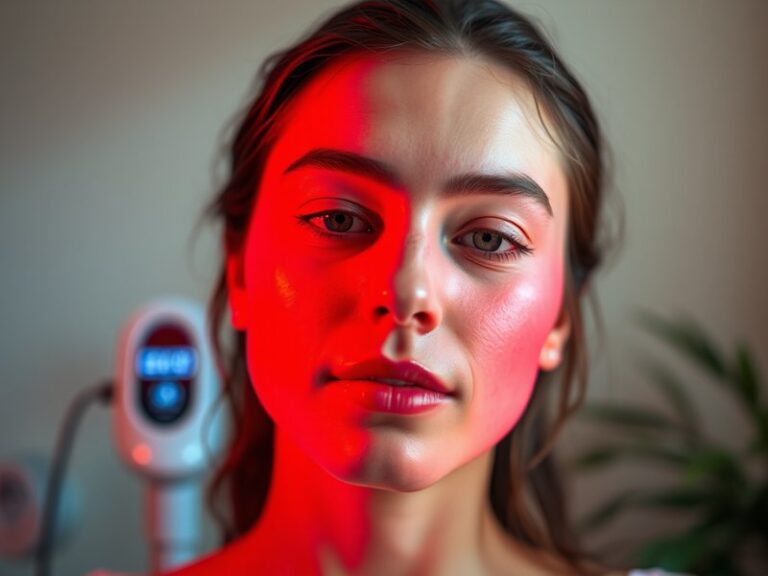Can You Use A Heat Lamp For Red Light Therapy?
Can You Use A Heat Lamp For Red Light Therapy?
Have you ever wondered if the cozy, warm glow of a heat lamp can serve as an effective tool for red light therapy?
This article will dive deep into the intersection of heat lamps and red light therapy, discussing their functionalities, benefits, and potential drawbacks. By the end, you’ll have a better understanding of whether or not a heat lamp can be used for red light therapy and what alternatives might serve your needs.
Key Takeaways
- A heat lamp provides heat but lacks the specific wavelengths of light required for effective red light therapy.
- Red light therapy promotes skin health, reduces inflammation, and aids in healing, while heat lamps primarily offer warmth.
- Alternatives to heat lamps for red light therapy include dedicated LED devices, infrared lamps, and laser treatments, each with unique benefits.
What is Red Light Therapy?
Red light therapy (RLT) is a form of phototherapy that involves exposing the skin to low levels of red or near-infrared light. It is designed to stimulate various cellular processes, which can promote healing, reduce inflammation, and improve skin health.
The key mechanism behind RLT lies in its ability to enhance mitochondrial function. Mitochondria, often referred to as the powerhouse of the cell, utilize light energy to produce adenosine triphosphate (ATP), the energy currency of cells. This process not only boosts energy levels but also accelerates recovery and healing.
RLT is often used in professional settings, such as dermatology clinics and physical therapy practices, but it has also gained popularity for at-home use through devices like LED panels and handheld devices.
What are the Benefits of Red Light Therapy?
Red light therapy has garnered significant attention due to its various health benefits. Let’s explore some of the numerous advantages it offers.
Promotes Skin Health
Red light is known to stimulate collagen production, which can improve skin elasticity, reduce wrinkles, and promote a youthful appearance. Many users report visible improvements in skin tone and texture following regular treatment.
Reduces Inflammation
One of the most notable benefits of RLT is its anti-inflammatory properties. Studies have shown that exposure to red light can help reduce inflammation in conditions like arthritis and acne, leading to pain relief and improved skin clarity.
Enhances Healing and Recovery
Athletes and physically active individuals often utilize RLT to speed up recovery after workouts or injuries. The enhanced ATP production helps cells repair and regenerate more quickly, reducing downtime and improving performance.
Supports Hair Growth
Emerging research indicates that red light therapy can stimulate hair follicles and improve hair density, making it a popular treatment for individuals experiencing hair loss.
Is it Possible to Use a Heat Lamp for Red Light Therapy?
Technically, you can use a heat lamp in conjunction with red light therapy, but it is not a direct substitute for authentic RLT. While both devices generate light and heat, a standard heat lamp does not emit the specific wavelengths (typically around 600-650 nanometers for red light therapy) needed to realize RLT’s full therapeutic potential.
What are the Advantages of Using a Heat Lamp?
Using a heat lamp offers certain advantages, including increased blood circulation and muscle relaxation, which can be beneficial for some therapeutic purposes.
What are the Disadvantages of Using a Heat Lamp?
However, heat lamps lack the essential wavelengths that stimulate cellular repair and growth effectively. Consequently, relying solely on a heat lamp may lead to unsatisfactory results for those seeking the specific benefits of red light therapy.
What are the Things to Consider Before Using a Heat Lamp for Red Light Therapy?
If you are contemplating using a heat lamp for red light therapy, consider the following essential factors:
Wavelength Spectrum
Ensure that the light emitted from the heat lamp does not just produce heat but also provides light in the necessary wavelengths for effective therapy. Most heat lamps are designed for warmth rather than therapeutic light.
Duration and Distance
Using a heat lamp for extended periods can lead to overheating or skin burns. If you still opt to use it, maintain a safe distance and limit session durations.
Potential Skin Sensitivity
Individuals with sensitive skin may experience irritation from prolonged exposure to intense heat. It is crucial to monitor how your skin reacts to avoid adverse effects.
What are the Alternatives to Using a Heat Lamp for Red Light Therapy?
If a heat lamp does not meet your needs for red light therapy, consider these alternatives:
LED Light Therapy Devices
Dedicated LED light therapy devices designed for home use can deliver targeted wavelengths for effective therapy. Many of these devices allow users to customize treatment settings for optimal results.
Infrared Light Therapy
Infrared lamps can offer deep tissue treatment, using longer wavelengths that penetrate the skin. These lamps can provide both warmth and therapeutic benefits, making them a viable alternative.
For more information, read Does Red Light Therapy Emit Radiation?
Laser Therapy
For those seeking intensive treatment, laser therapy utilizes coherent light targeted specifically to treat various conditions. This method is often performed by professionals and has been shown to yield significant results for diverse applications.
See our extensive coverage Is Red Light Therapy Legit?
Conclusion: Is it Recommended to Use a Heat Lamp for Red Light Therapy?
While a heat lamp can offer warmth and comfort, it is not a substitute for the specific benefits provided by red light therapy. If you seek the therapeutic advantages associated with RLT, investing in dedicated devices that produce the correct wavelengths is advisable.
Frequently Asked Questions
Can I use a regular bulb for red light therapy?
No, regular bulbs typically do not emit light in the specific wavelengths necessary for red light therapy. Look for bulbs or devices specifically designed for RLT.
How often should I do red light therapy?
For optimal results, sessions are often recommended 3-5 times a week, with each session lasting from 10 to 20 minutes, depending on the device and treatment goals.
Are there any side effects of red light therapy?
Red light therapy is generally regarded as safe, with minimal side effects. Some users may experience temporary redness or warmth in the treated area, but serious adverse effects are rare.
Can I combine red light therapy with other treatments?
Yes, red light therapy can often be combined with other complementary treatments such as topical applications, massage, or physical therapy to enhance overall benefits.
What is the best device for red light therapy?
The best device varies depending on personal needs and budget. Look for devices that specifically mention their wavelength range (600-650 nm for red light) and have good user reviews.
